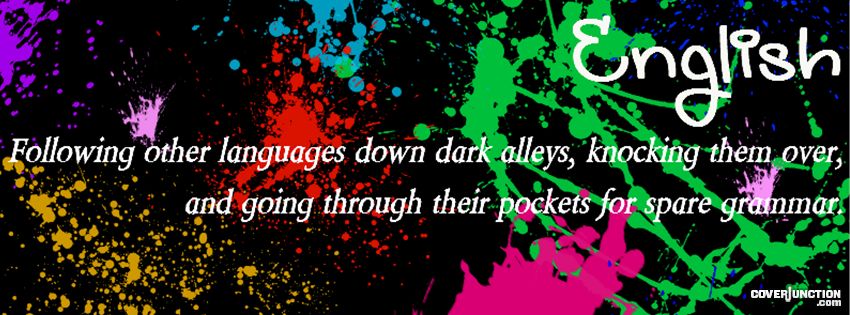"Adverbs"
redirects here. For the Daniel Handler novel, see Adverbs (novel).
An adverb is a word
that changes or qualifies the meaning of a verb, adjective,
other adverb, clause, sentence or any other word or phrase,
except that it does not include the adjectives and determiners that directly modify nouns. Adverbs are
traditionally regarded as one of the parts of speech,
although the wide variety of the functions performed by words classed as
adverbs means that it is hard to treat them as a single uniform category.
Adverbs typically answer questions
such as how?, in what way?, when?, where?,
and to what extent?. This function is called the adverbial function,
and is realized not just by single words (i.e., adverbs) but by adverbial
phrases and adverbial
clauses.
Uses of adverbs
Adverbs are words like slowly, yesterday, now, soon,
and suddenly. An adverb usually modifies a verb or a verb
phrase. It provides information about the manner, place, time, frequency,
certainty, or other circumstances of the activity denoted by the verb or verb
phrase.
Examples:
1. She walked slowly. (Here the
adverb slowly shows the manner in which she walked.)
2. The kids are playing together.
(Here the adverb together provides information about how the
kids are playing.)
Adverbs can also modify adjectives
and other adverbs.
1. You are quite right. (Here the
adverb quite modifies the adjective right.)
2. She spoke quite loudly. (Here the
adverb quite modifies another adverb – loudly.)
In English,
adverbs of manner (answering the question how?) are often formed by
adding -ly to adjectives. Other languages often have similar
methods for deriving adverbs from adjectives (French,
for example, uses the suffix -ment), or else use the same form for
both adjectives and adverbs. Some examples are listed under Adverbs in
specific languagesbelow.
Where the meaning permits, adverbs
may undergo comparison, taking comparative and superlative forms.
In English this is usually done by adding more and most before
the adverb (more slowly, most slowly), although there are a few adverbs
that take inflected forms, such as well, for which better and best are
used.
For more information about the use of
adverbs in English, see English grammar: Adverbs. For use in other
languages, see Adverbs in
specific languages below, and the articles on individual
languages and their grammars.
Adverbs as a "catch-all" category
Adverbs are considered a part of
speech in traditional English grammar and are still included as a part of
speech in grammar taught in schools and used in dictionaries. However, modern
grammarians recognize that words traditionally grouped together as adverbs
serve a number of different functions. Some would go so far as to call adverbs
a "catch-all" category that includes all words that do not belong to
one of the other parts of speech.
A more logical approach to dividing
words into classes relies on recognizing which words can be used in a certain
context. For example, a noun is a word that can be inserted in the following
template to form a grammatical sentence:
The……._is red. (For example,
"The hat is red".)
When this approach is taken, it is
seen that adverbs fall into a number of different categories. For example, some
adverbs can be used to modify an entire sentence, whereas others cannot. Even
when a sentential adverb has other functions, the meaning is often not the
same. For example, in the sentences She gave birth naturally and Naturally,
she gave birth, the word naturally has different meanings. Naturally as
a sentential adverb means something like "of course" and as a
verb-modifying adverb means "in a natural manner". This
"naturally" distinction demonstrates that the class of sentential
adverbs is a closed class (there is resistance to
adding new words to the class), whereas the class of adverbs that modify verbs
isn't.
Words like very and particularly afford
another useful example. We can say Perry is very fast, but not Perry
very won the race. These words can modify adjectives but not verbs. On the
other hand, there are words like here and there that
cannot modify adjectives. We can say The sock looks good there but
not It is a there beautiful sock. The fact that many adverbs can be
used in more than one of these functions can confuse this issue, and it may
seem like splitting hairs to say that a single adverb is really two or more
words that serve different functions. However, this distinction can be useful,
especially considering adverbs like naturally that have
different meanings in their different functions. Huddlestondistinguishes between a word and
a lexicogrammatical-word.
Not is an interesting case.
Grammarians have a difficult time categorizing it, and it probably belongs in
its own class





